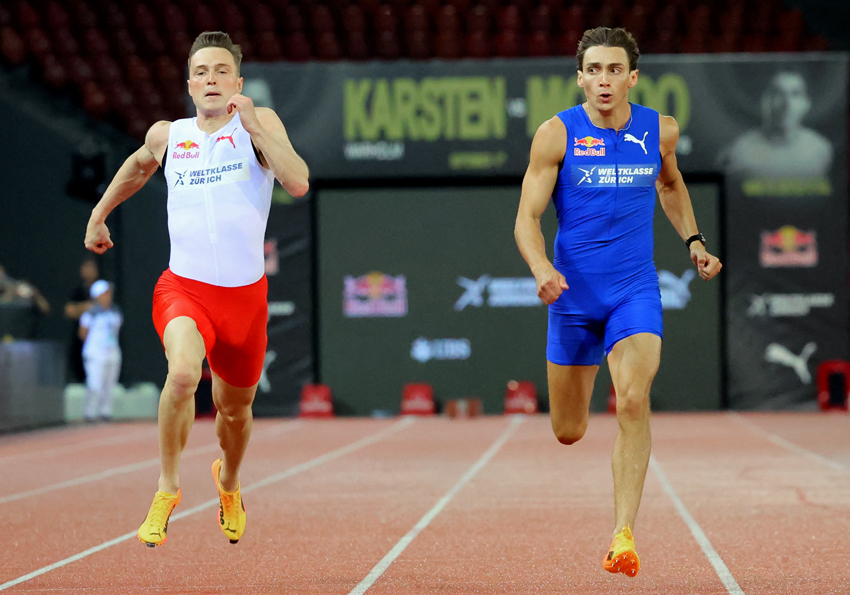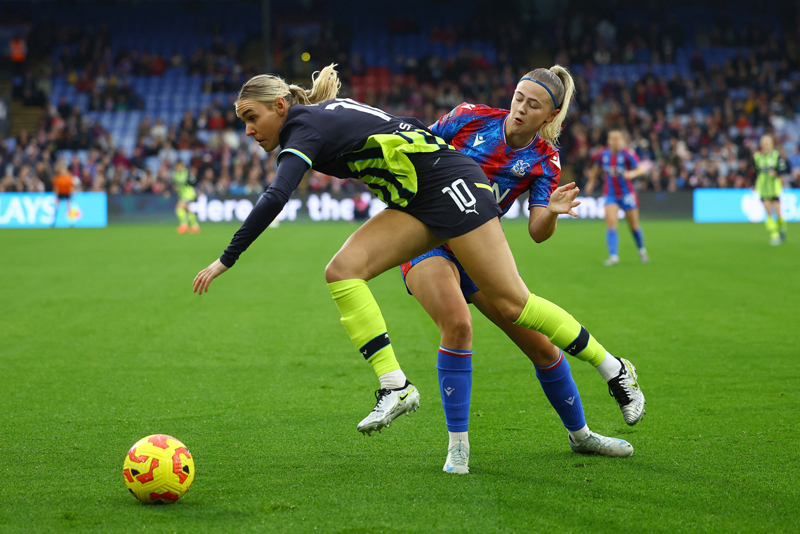Hydrotherapy - Does it work?
Don't pour cold water over hydrotherapy
These days, hydrotherapy techniques – particularly alternating hot and cold water immersion – are becoming increasingly popular as an aid to recovery. But is this practice backed up by research? And what mechanisms are responsible for its effects?The importance of recovery for any athlete cannot be over-emphasised. Unfortunately, however, although athletes and coaches are creative and energetic about their training, many ignore or forget the performance benefits they could gain by incorporating recovery strategies into their daily programmes.
Athletes must deal with many forms of fatigue: psychological (emotional and social stress); metabolic (energy stores); neural (localised force production and drive/motivation); and environmental (climate and travel). Coaches must therefore concern themselves not just with the training stimulus but with any potential additional fatigue.
Yet all too often the implementation of recovery techniques is restricted to times of illness or injury.
Surprisingly, recovery has not yet been fully defined and evaluated in an analytical way. Therefore determining ‘best practice’ per se may not be possible at present due to a lack of scientific evidence, and recovery modalities have to be assessed on the basis of limited research or – as long as there is no evidence to the contrary – anecdotal advocacy.
A variety of physical, psychological and nutritional methods are currently employed in a bid to accelerate the recovery process. Hot and cold water immersion, or contrast bathing, is one hydrotherapy technique that is currently growing in popularity.
Hydrotherapy techniques spring in the most recent past from the sports medicine and rehabilitation fields, where they are used for the treatment of acute injuries. However, such treatments have been employed for their restorative properties for several thousands of years and can be traced back to the ancient Greeks and Romans.
Cryo vs hydrotherapy

If we consider the physiological effects of cooling (cryo) and heating (thermo), we can begin to appreciate why such methods have become common practice for athletes.
It is proven that cryotherapy decreases skin, subcutaneous and muscle temperature, causing narrowing of the blood vessels (vasoconstriction). This narrowing has the beneficial effects of dulling and reducing the sensation of pain, limiting the amount of swelling, reducing muscle spasm and clearing metabolites from superficial to deep tissue.
As you might expect, thermotherapy has been shown to have the opposite effect of increasing tissue temperature, thus causing vasodilation. The resulting increased blood flow has the beneficial effects of increasing oxygen and antibody supply, while also reducing muscle spasm and clearing metabolites.
In theory, therefore, contrast bathing would promote rapid alternation between vasodilation and vasoconstriction, causing a ‘pumping’ action in the peripheral circulation.
The degree to which ‘real world’ methods of hydrotherapy can promote such physiological responses is contentious. One recent study found no significant difference in intramuscular temperature following hot (40.6°C) and cold (15.6°C) immersion(1). And a subsequent study reported the same findings(2).
However, there is evidence to suggest that hydrotherapy can have a beneficial influence on subsequent athletic performance. Using nationally ranked Finnish track and field athletes, researchers demonstrated that 20 minutes of warm (36-37°C) underwater massage (using the jets in a spa) following plyometric training helped athletes to maintain leg explosiveness the following day(3). By contrast, passive rest after such training resulted in a significant reduction in leg power.
Using a similar protocol, other scientists have demonstrated that, following 15 minutes of submaximal exercise, lactic acid measures returned to resting levels faster with 30 minutes of hydromassage than with passive resting recovery(4).
Scientists from Australia have reported that athletes who use hot-cold contrast hydrotherapy after training or competition have lighter, less tight muscles together with a feeling of mental freshness(5).
Another (unpublished) study demonstrated that alternating between a warm spa (39-40°C) for three minutes and a cold shower (10-15°C) for 30- 60 seconds enabled lactate levels to recover as fast as with an active recovery protocol.
Similarly, after completing treadmill runs to exhaustion, highly active subjects recorded lower lactate concentrations following a contrast protocol than with passive recovery(6). Additionally, the subjects reported an increased perception of recovery during the contrast protocol, even by comparison with an active recovery.
Effect on sore muscles
Another research group found that the perceived soreness of eccentrically trained muscles returned to baseline levels following cold whirlpool and contrast methods, making them more effective than warm hydromassage and passive recovery(7).As you can see from these examples, exact protocols for hydrotherapy techniques are yet to be firmly established. Injury treatment by means of contrast immersion commonly uses cold baths with temperatures ranging from 12-15°C and hot baths ranging from 37-43°C.
Scientists from the Australian Institute of Sports have now published guidelines specifically for the use of contrast water therapy after exercise(8). They suggest temperatures similar to those used in injury treatment but with differing durations for showers (1-2 min hot, 10-30s cold) and bath/spa (3-4 min hot, 30-60s cold), repeated three times.
During the recent Rugby World Cup, the England squad employed such protocols, involving a five-minute ice bath followed by five hot and cold shower exposures lasting one minute each.
Undoubtedly further research is needed to ascertain the most appropriate mode, duration and temperature for this method of recovery. However, if we accept that a recovery strategy can be deemed suitable on the basis of no scientific evidence to the contrary and/or anecdotal advocacy, then hydrotherapy, including contrast techniques, does have a role.
I am not suggesting that hydro techniques should replace active recovery, but their inclusion, even to a partial extent, could provide some additional recovery advantages. Active recovery requires energy, and hydro techniques would reduce glycogen depletion, therefore lowering metabolic fatigue. A change in routine also alleviates boredom, thereby also reducing psychological fatigue.
Of course, athletes should be urged to continue hydrating throughout hydro recovery and advised not to spend more than the prescribed time in the warm water – which most have a tendency to do. Otherwise, dehydration and neural fatigue may offset the other recovery benefits.
Coaches should also be aware that hydro techniques can be quite time-consuming, particularly with a large squad.
Athletes can be rapidly educated in the use of these recovery strategies with a view to managing for themselves. Contrast immersion can be achieved simply by using a shower and bath at home.
More innovative coaches have employed ‘wheely bins’ at their training venue, while I myself have resorted to buying paddling pools from toy shops when abroad with squads.
If nothing else, I have found contrast bathing to be an excellent team-building exercise, as athletes all go through the same ‘torture’!
Andrew Harrison
References
- Journal of Athletic Training 1994; 29(4), 318-322
- Journal of Athletic Training 1997; 32(3), 238-241
- European Journal of Applied Physiology 1995; 71, 431-438
- Acta Physiologica Poloncia 1983; 34(2), 257-261
- SportsMed News 2001; 2-3
- Journal of Athletic Training 1998; 33(3), 222-228
- Journal of Science and Medicine in Sport 2004; 7(1), 1-10
- Recovery Training 1996; In Training for Speed and Endurance, Allen and Unwin, Sydney
You need to be logged in to continue reading.
Please register for limited access or take a 30-day risk-free trial of Sports Performance Bulletin to experience the full benefits of a subscription. TAKE A RISK-FREE TRIAL
TAKE A RISK-FREE TRIAL
Newsletter Sign Up
Testimonials
Dr. Alexandra Fandetti-Robin, Back & Body Chiropractic
Elspeth Cowell MSCh DpodM SRCh HCPC reg
William Hunter, Nuffield Health
Newsletter Sign Up
Coaches Testimonials
Dr. Alexandra Fandetti-Robin, Back & Body Chiropractic
Elspeth Cowell MSCh DpodM SRCh HCPC reg
William Hunter, Nuffield Health
Keep up with latest sports science research and apply it to maximize performance
Today you have the chance to join a group of athletes, and sports coaches/trainers who all have something special in common...
They use the latest research to improve performance for themselves and their clients - both athletes and sports teams - with help from global specialists in the fields of sports science, sports medicine and sports psychology.
They do this by reading Sports Performance Bulletin, an easy-to-digest but serious-minded journal dedicated to high performance sports. SPB offers a wealth of information and insight into the latest research, in an easily-accessible and understood format, along with a wealth of practical recommendations.
*includes 3 coaching manuals
Get Inspired
All the latest techniques and approaches
Sports Performance Bulletin helps dedicated endurance athletes improve their performance. Sense-checking the latest sports science research, and sourcing evidence and case studies to support findings, Sports Performance Bulletin turns proven insights into easily digestible practical advice. Supporting athletes, coaches and professionals who wish to ensure their guidance and programmes are kept right up to date and based on credible science.









